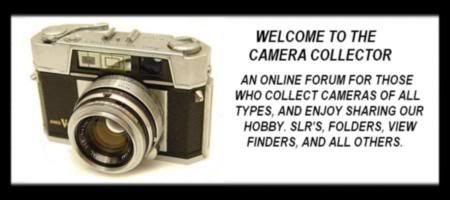Post by PeterW on Dec 14, 2007 19:32:11 GMT -5
Wasn't sure where to post this so I put it in Open Topic.
In the thread on film drying the topic of shelf life for B/W developer cropped up, and I thought my experiences might be of some interest.
In the days when I used a lot of B/W film, usually FP4, I developed it in ID11 (same as D76, near enough), and I mixed the powders to make 5 litre batches. Two reasons: one I regarded mixing chemicals as a chore, and two if I was out by plus or minus a few ml or fl oz in 5 litres it affected the concentration much less than if I was the same amount out in one litre.
I used to store the full strength dev in brown 'Winchester quart' bottles - actually 80 fluid ounces, or just over two and a quarter litres - which I got from my local friendly dispensing chemist.
In its technical literature, Ilford gave the shelf life of full-strength mixed ID11 as a "minimum of 12 months, provided air is excluded to prevent oxidation". I kept the air away from the dev by squirting in a short burst of an inert gas sold in aerosols for the purpose. It's heavier than air so it forms an oxygen-excluding layer over the top of the developer. Mine was marketed by Tetenal, and I think it's still available. I expect there are also other brands.
At that time I used five litres in well under a year, but as colour began to take over I used the ID11 less quickly. For the occasional B/W film I used some that had been in Winchester bottles for ages - the label said it was mixed just over 18 months previously - and it poured as clear as the day it was mixed, no sign of yellowing from oxidation, and developed perfectly.
I've always used ID11 full strength. Some people like to use it diluted 1 +1, but I believe the shelf life is slightly shortened if it's diluted, so I would recommend storing at full strength.
On film drying, I was always in too much of a hurry to get prints out to wait for film to dry naturally, so I followed - and still do follow - a tip given to me by a delightful Irish freelance pro named Kevin Macdonald. Some of you may possibly remember the name as he once had a regular feature in one of the UK photo mags every month.
His advice was to let the film drain for a couple of minutes and then hold the bottom clip and use a hair dryer set on medium heat to dry it quickly. When I questioned if that was likely to affect the emulsion, Kevin dropped into a lovely broad Irish accent (not his normal speaking voice) and replied something like "Ah, to be sure, film's not as weak as a new-born babe. It's quite tough. Don't pamper it, you have to show it who's boss, so you do!"
So for the past twenty or more years I've always dried B/W film with a hair dryer, and I can have it ready to scan well within 10 minutes of the final wash. Never had any problems with dust spots, either.
PeterW
In the thread on film drying the topic of shelf life for B/W developer cropped up, and I thought my experiences might be of some interest.
In the days when I used a lot of B/W film, usually FP4, I developed it in ID11 (same as D76, near enough), and I mixed the powders to make 5 litre batches. Two reasons: one I regarded mixing chemicals as a chore, and two if I was out by plus or minus a few ml or fl oz in 5 litres it affected the concentration much less than if I was the same amount out in one litre.
I used to store the full strength dev in brown 'Winchester quart' bottles - actually 80 fluid ounces, or just over two and a quarter litres - which I got from my local friendly dispensing chemist.
In its technical literature, Ilford gave the shelf life of full-strength mixed ID11 as a "minimum of 12 months, provided air is excluded to prevent oxidation". I kept the air away from the dev by squirting in a short burst of an inert gas sold in aerosols for the purpose. It's heavier than air so it forms an oxygen-excluding layer over the top of the developer. Mine was marketed by Tetenal, and I think it's still available. I expect there are also other brands.
At that time I used five litres in well under a year, but as colour began to take over I used the ID11 less quickly. For the occasional B/W film I used some that had been in Winchester bottles for ages - the label said it was mixed just over 18 months previously - and it poured as clear as the day it was mixed, no sign of yellowing from oxidation, and developed perfectly.
I've always used ID11 full strength. Some people like to use it diluted 1 +1, but I believe the shelf life is slightly shortened if it's diluted, so I would recommend storing at full strength.
On film drying, I was always in too much of a hurry to get prints out to wait for film to dry naturally, so I followed - and still do follow - a tip given to me by a delightful Irish freelance pro named Kevin Macdonald. Some of you may possibly remember the name as he once had a regular feature in one of the UK photo mags every month.
His advice was to let the film drain for a couple of minutes and then hold the bottom clip and use a hair dryer set on medium heat to dry it quickly. When I questioned if that was likely to affect the emulsion, Kevin dropped into a lovely broad Irish accent (not his normal speaking voice) and replied something like "Ah, to be sure, film's not as weak as a new-born babe. It's quite tough. Don't pamper it, you have to show it who's boss, so you do!"
So for the past twenty or more years I've always dried B/W film with a hair dryer, and I can have it ready to scan well within 10 minutes of the final wash. Never had any problems with dust spots, either.
PeterW





